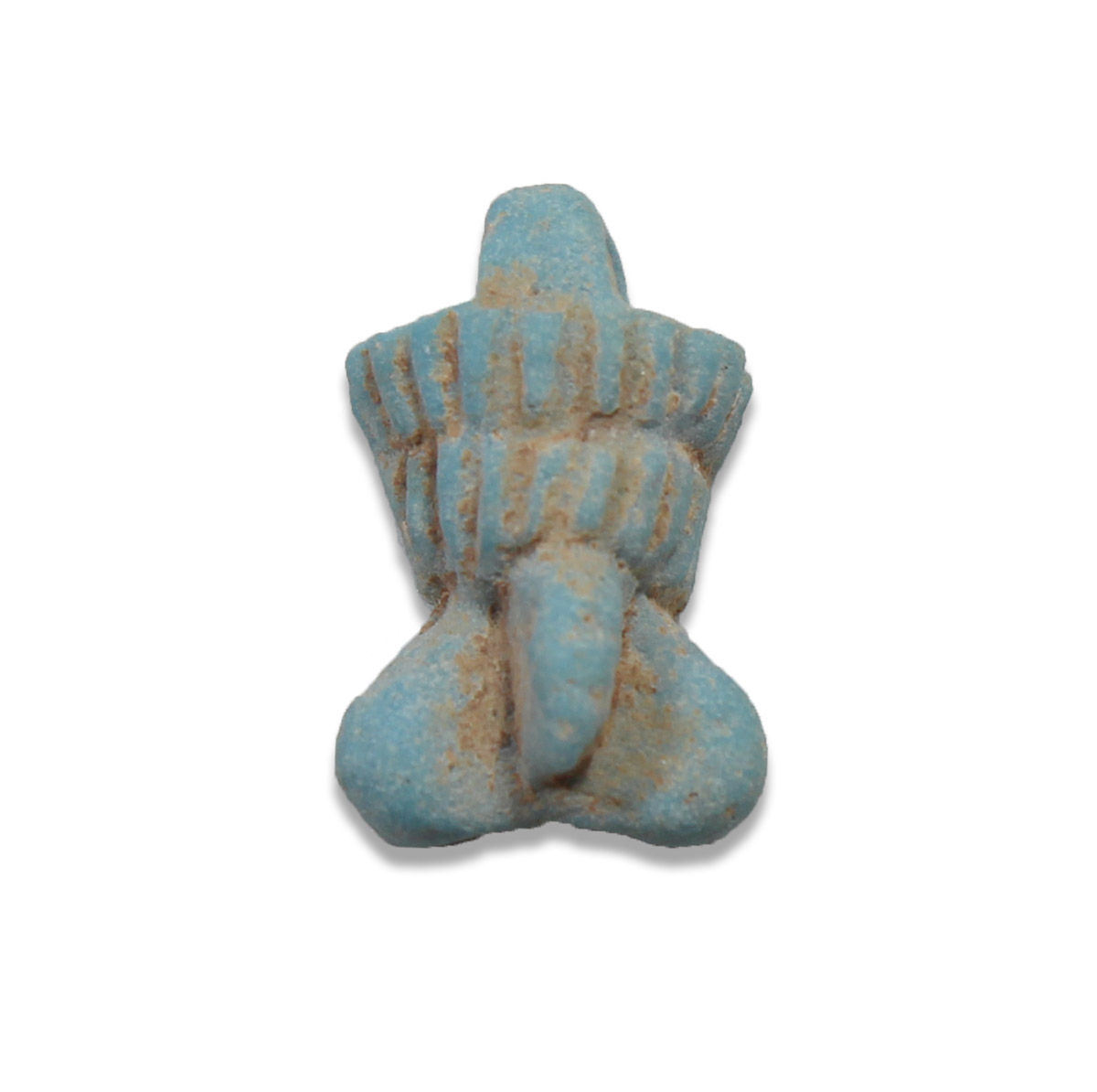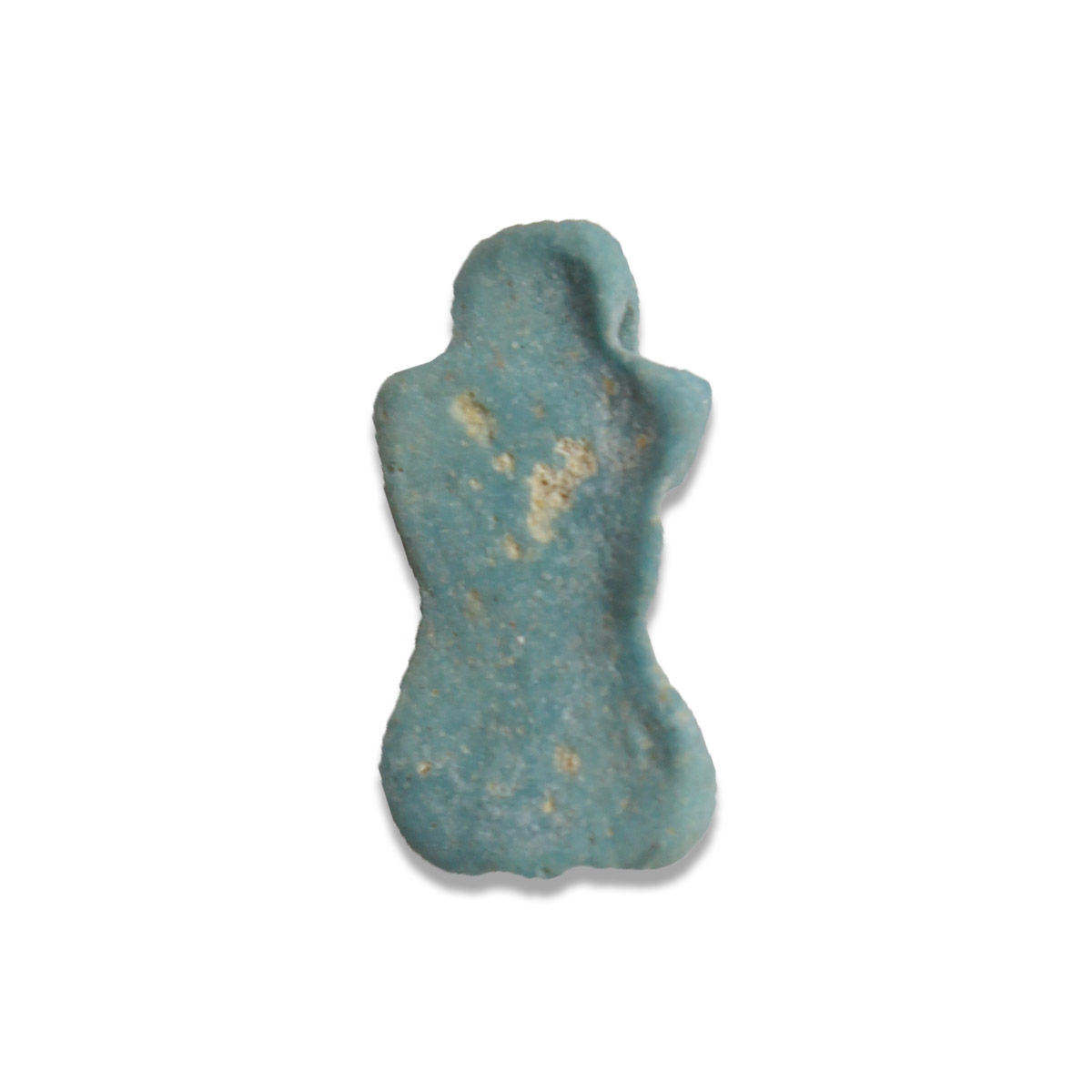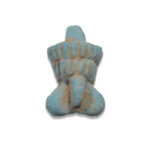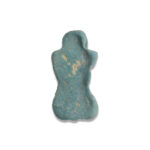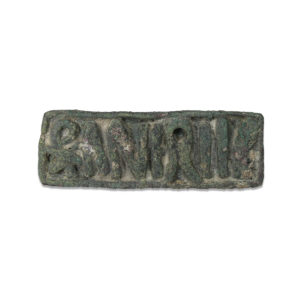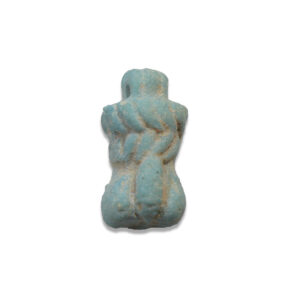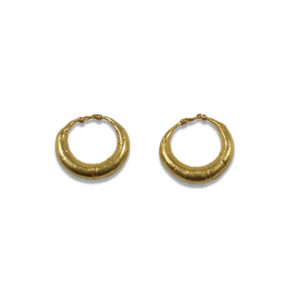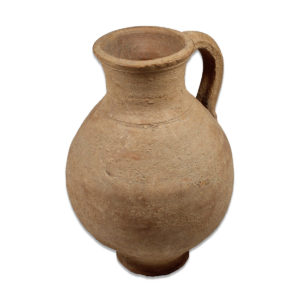Description
| ITEM | Phallic amulet |
| MATERIAL | Faience |
| CULTURE | Roman |
| PERIOD | 1st – 3rd Century A.D |
| DIMENSIONS | 18 mm x 12 mm |
| CONDITION | Good condition |
| PROVENANCE | Ex English private collection, London, G.H. Collection, acquired before 1988 |
In ancient Roman religion and magic, the fascinus or fascinum was the embodiment of the divine phallus. The word can refer to the deity himself (Fascinus), to phallus effigies and amulets, and to the spells used to invoke his divine protection. Pliny calls it a medicus invidiae, a “doctor” or remedy for envy (invidia, a “looking upon”) or the evil eye.
Fascinus was thought particularly to ward off evil from children, mainly boys, and from conquering generals. The protective function of the phallus is usually related to the virile and regenerative powers of an erect phallus, though in most cases the emotion, shame, or laughter created by obscenity is the power that diverts the evil eye.


